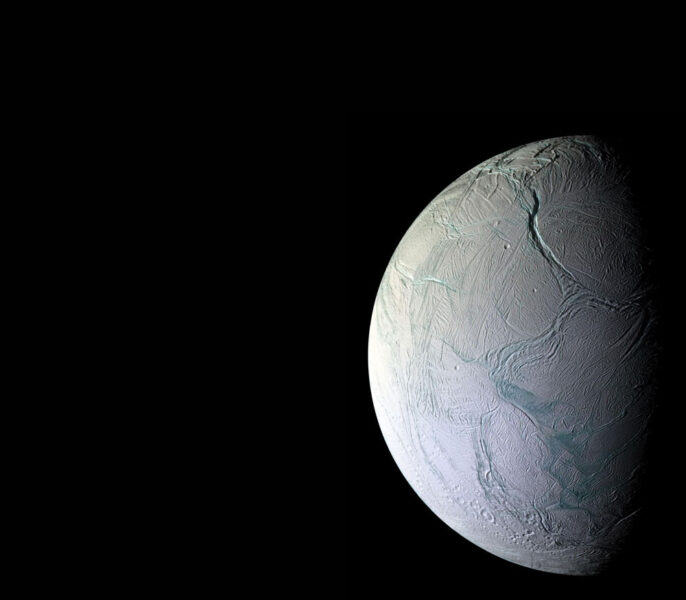By century’s end, the author thinks we’ll have an answer to this question. But what kind of answer?

NASA / JPL / Space Science Institute
Over the 80 years in which Sky & Telescope has been informing us about the universe and those who explore it, scientific and popular beliefs about extraterrestrial life have fluctuated between grim and optimistic.
Before the Space Age, many scientists were naively confident about the prospects for life nearby. With only telescopic data to constrain our wishful thinking, it was possible, and popular, to imagine vegetation forming the seasonal “wave of darkening” on Mars or soaking up the water we thought was raining down on Venus.
In 1962, NASA’s Mariner 2 began the work — which continues today — of replacing conjecture with observation. With the first successful spacecraft visit beyond the Earth/Moon system, it showed conclusively that the surface of Venus was too hot for liquid water or organic life. Three years later, Mariner 4 revealed a cratered “moonscape” on Mars that dampened hopes of finding the Red Planet awash in green.
Since then, we’ve been through several rounds of raised and then dashed hopes of finding nearby company. Orbiting Mars, Mariner 9 spied dried-up riverbeds. Carl Sagan and a number of colleagues convinced themselves that Martian soil organisms might be merely awaiting a splash of “chicken soup,” but their 1976 Viking life experiments came up short.
NASA soured on Martian life, but only temporarily. Expectations that life on Mars lies just under the next rock have repeatedly risen and fallen. A “discovery” (later proven false) of chlorophyll, a hint of possible fossils in a meteorite, and perennial announcements of water and whiffs of methane all have revived hopes, at least for a little while.
Meanwhile, in the outer solar system we’ve discovered worlds that hold their oceans on the inside. Europa, Enceladus, Titan, and several other moons, even the dwarf planet Pluto — all are possible homes for aqueous life. And don’t count out Venus. As I’ve written here (S&T: Jan. 2021, p. 15), there are reasons to suspect that, despite Mariner 2’s reality check on our dreams of an Earth-like neighbor, a habitat may yet lurk in the clouds. So even if, as some of us suspect, Mars is completely dead, multiple places remain in the solar system where life-optimists can invest their hopes — if only because we haven’t really explored them yet.
But I believe that in another 80 years we’ll have the answer to “Are we alone?” The discovery could come in one of these unexplored corners of our own system. But given the sheer number of exoplanets, the odds seem good that, after we’ve carefully observed thousands of them, we’ll have found unmistakable biosignatures (S&T: May 2021, p. 34) or even technosignatures. By the time the next century arrives, I bet we’ll have identified several classes of inhabited worlds and be well on our way to a mature science of comparative astrobiology that can investigate the cosmic distribution of life.
But what if we haven’t? It’s hard to prove a negative. Yet what if we’ve plumbed the ice-moon oceans, sifted through the Venusian clouds, and examined scores of high-resolution exoplanet spectra and found not a trace of anything swimming or breathing? Then we will be pretty far down the path of concluding that there really is something very peculiar and unique about our planet and its denizens after all. If that’s the case, then in some strange sense the universe is our responsibility.
Either way, life is precious. Let’s work toward a sustainable presence here on Earth so we can keep exploring and find out how lively our universe is.
This article originally appeared in print in the November 2021 issue of Sky & Telescope.
 0
0
Comments
You must be logged in to post a comment.